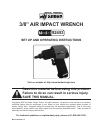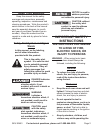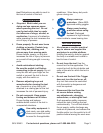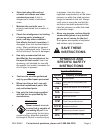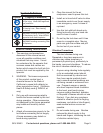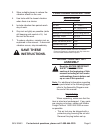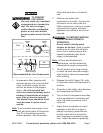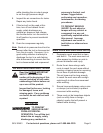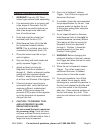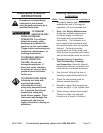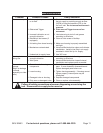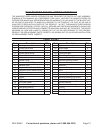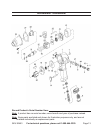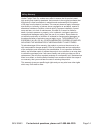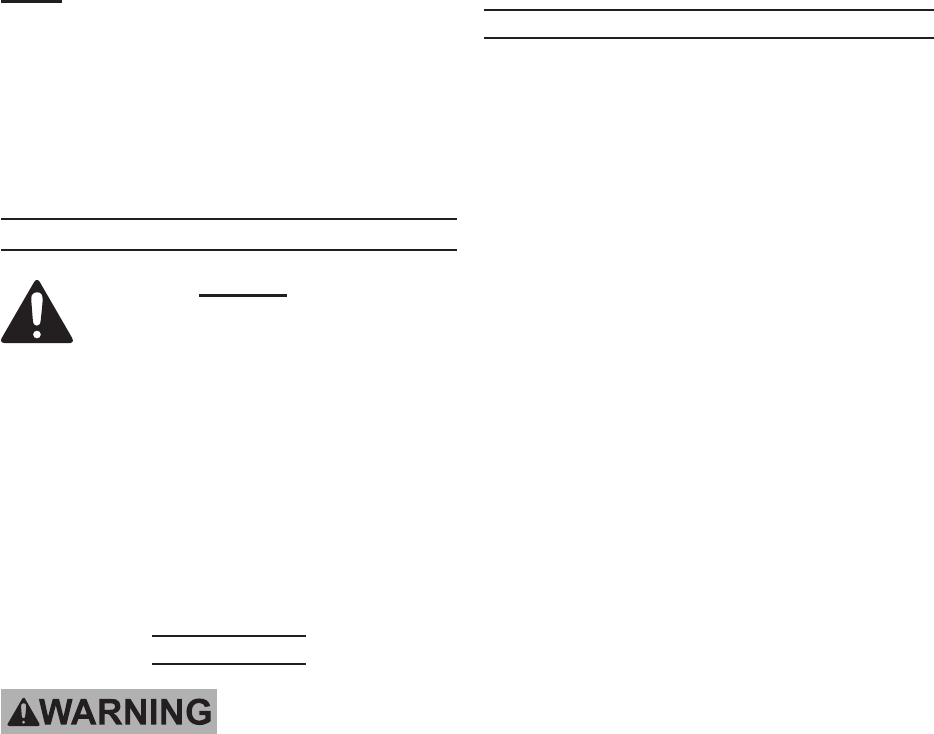
Page 8For technical questions, please call 1-800-444-3353.SKU 92453
while checking the air output gauge
to set the right pressure range.
8. Inspect the air connections for leaks.
Repair any leaks found.
9. If the tool will not be used at this
time, turn off and detach the air
supply, safely discharge any
residual air pressure, and release
the throttle and/or turn the switch to
its off position to prevent accidental
operation.
10. Drain the compressor regularly.
Note: Residual air pressure should not be
present after the tool is disconnected
from the air supply. However, it is a
good safety measure to attempt to
discharge the tool in a safe fashion
after disconnecting to ensure that the
tool is disconnected and unpowered.
OPERATING INSTRUCTIONS
Read the ENTIRE IMPORTANT
SAFETY INFORMATION
section at the beginning of this
manual including all text under
subheadings therein before set
up or use of this product.
Inspect tool before use, looking
for damaged, loose, and
missing parts. If any problems
are found, do not use tool until
repaired.
Tool Set Up
TO PREVENT
SERIOUS INJURY
FROM ACCIDENTAL
OPERATION: Turn off the tool,
detach the air supply, safely
discharge any residual air
pressure in the tool, and
release Trigger before
performing any inspection,
maintenance, or cleaning
procedures.
TO PREVENT SERIOUS
INJURY: Do not adjust or
tamper with any control or
component in a way not
specically explained within
this manual. Improper
adjustment can result in
tool failure or other serious
hazards.
Work Piece and Work Area Set Up
1. Designate a work area that is clean
and well-lit. The work area must not
allow access by children or pets to
prevent distraction and injury.
2. Route the air hose along a safe
route to reach the work area without
creating a tripping hazard or exposing
the air hose to possible damage.
The air hose must be long enough
to reach the work area with enough
extra length to allow free movement
while working.
3. Secure loose workpieces using a vise
or clamps (not included) to prevent
movement while working.
4. There must not be hazardous objects
(such as utility lines or foreign
objects) nearby that will present a
hazard while working.



